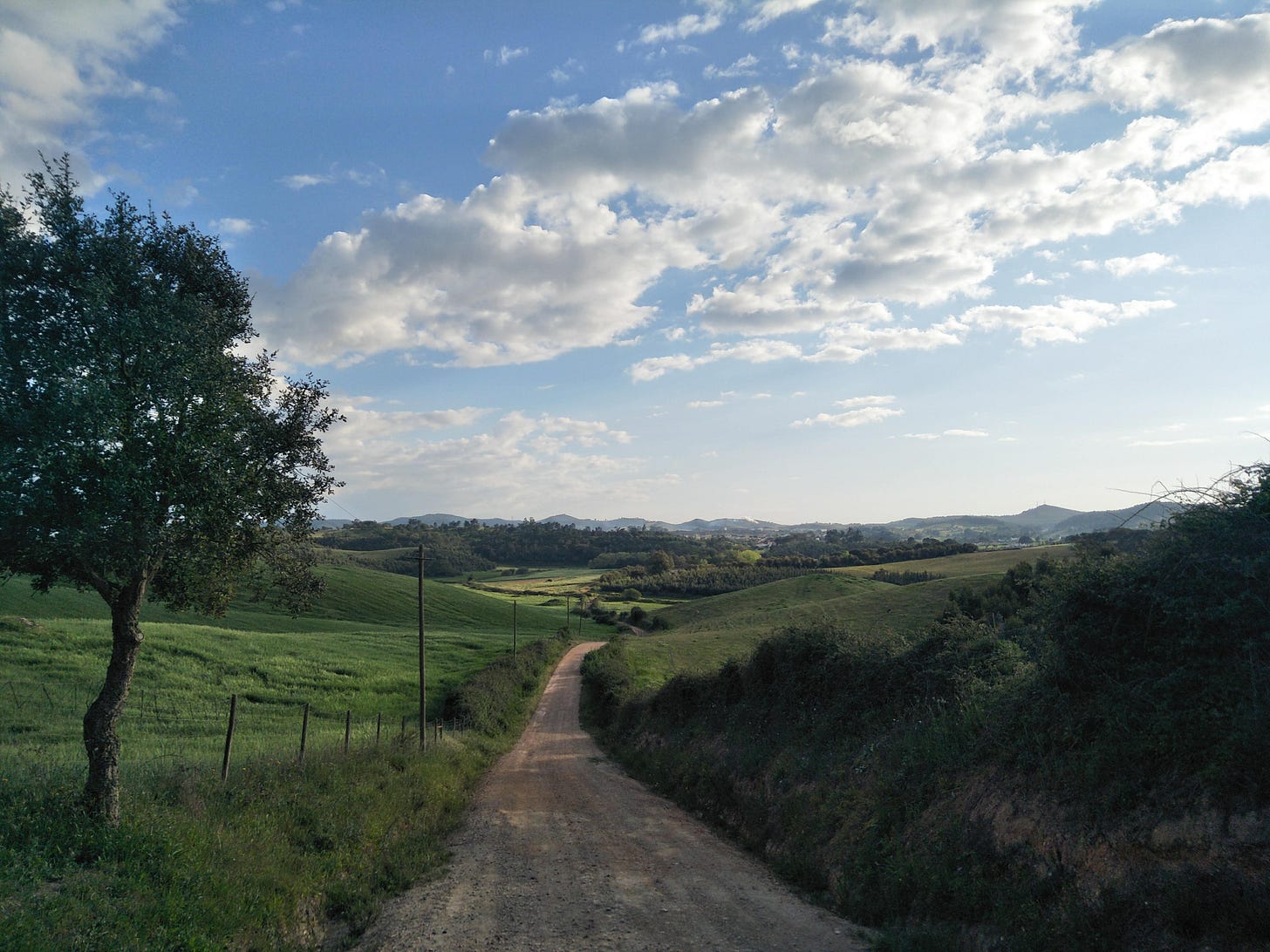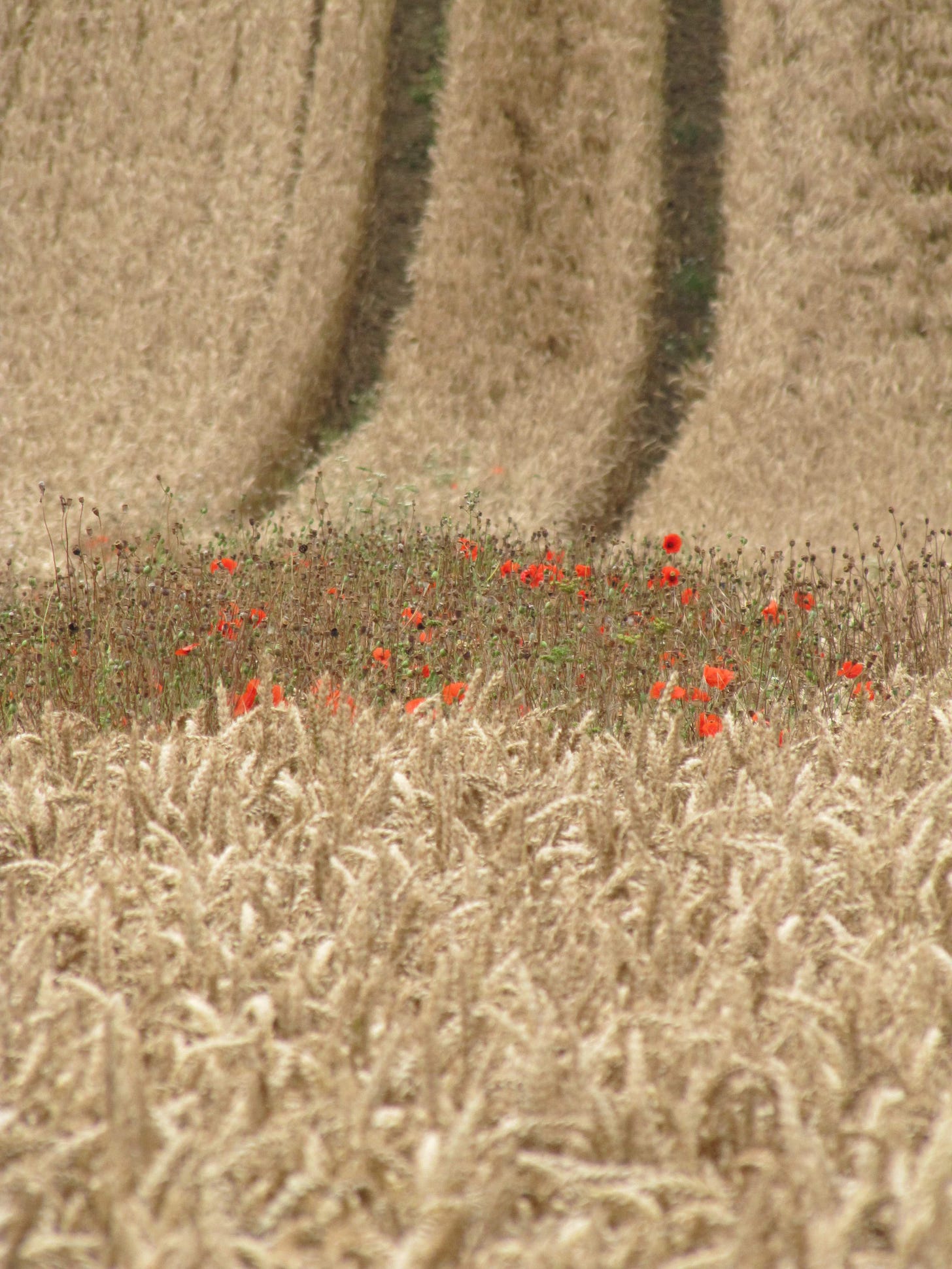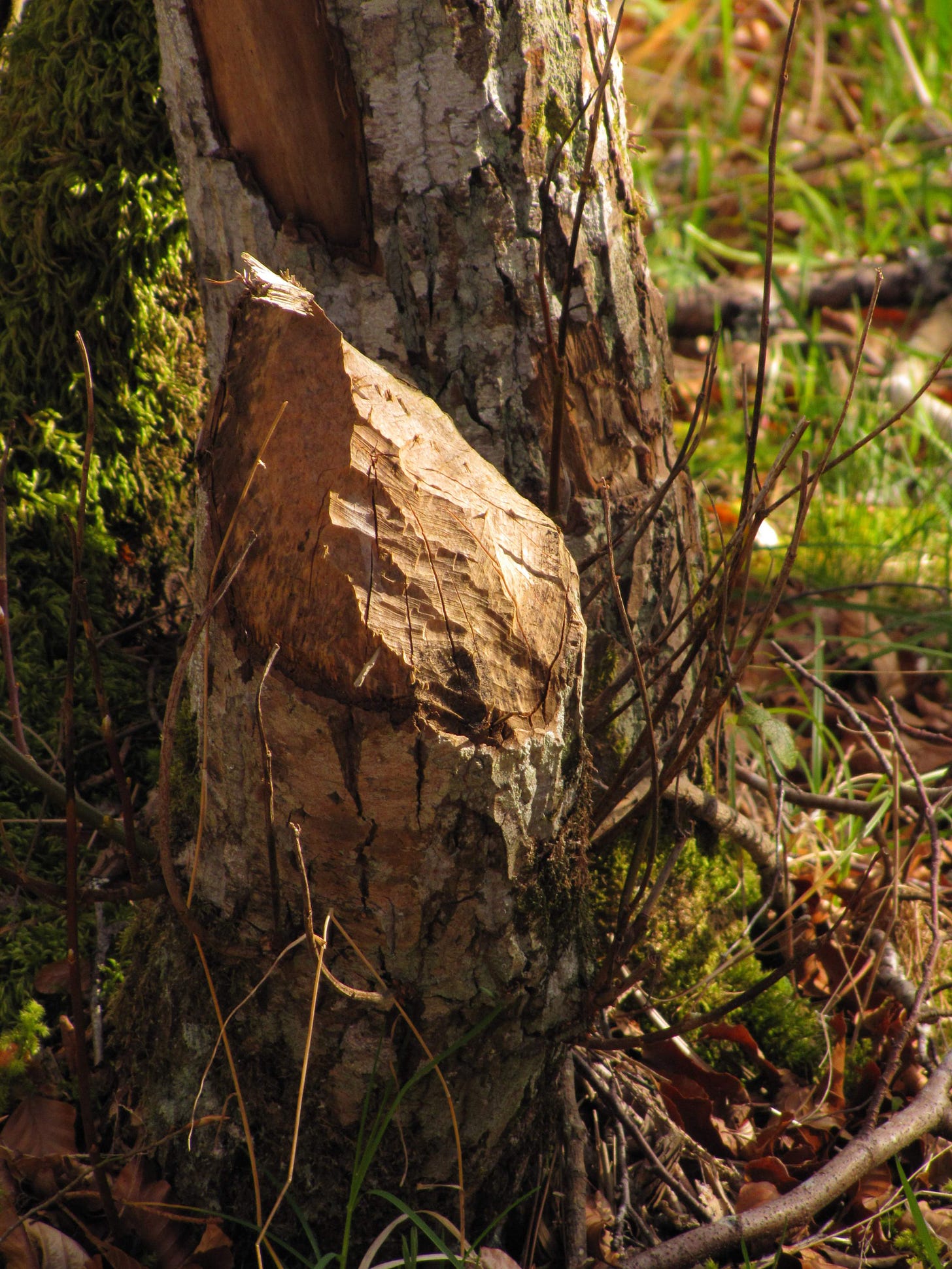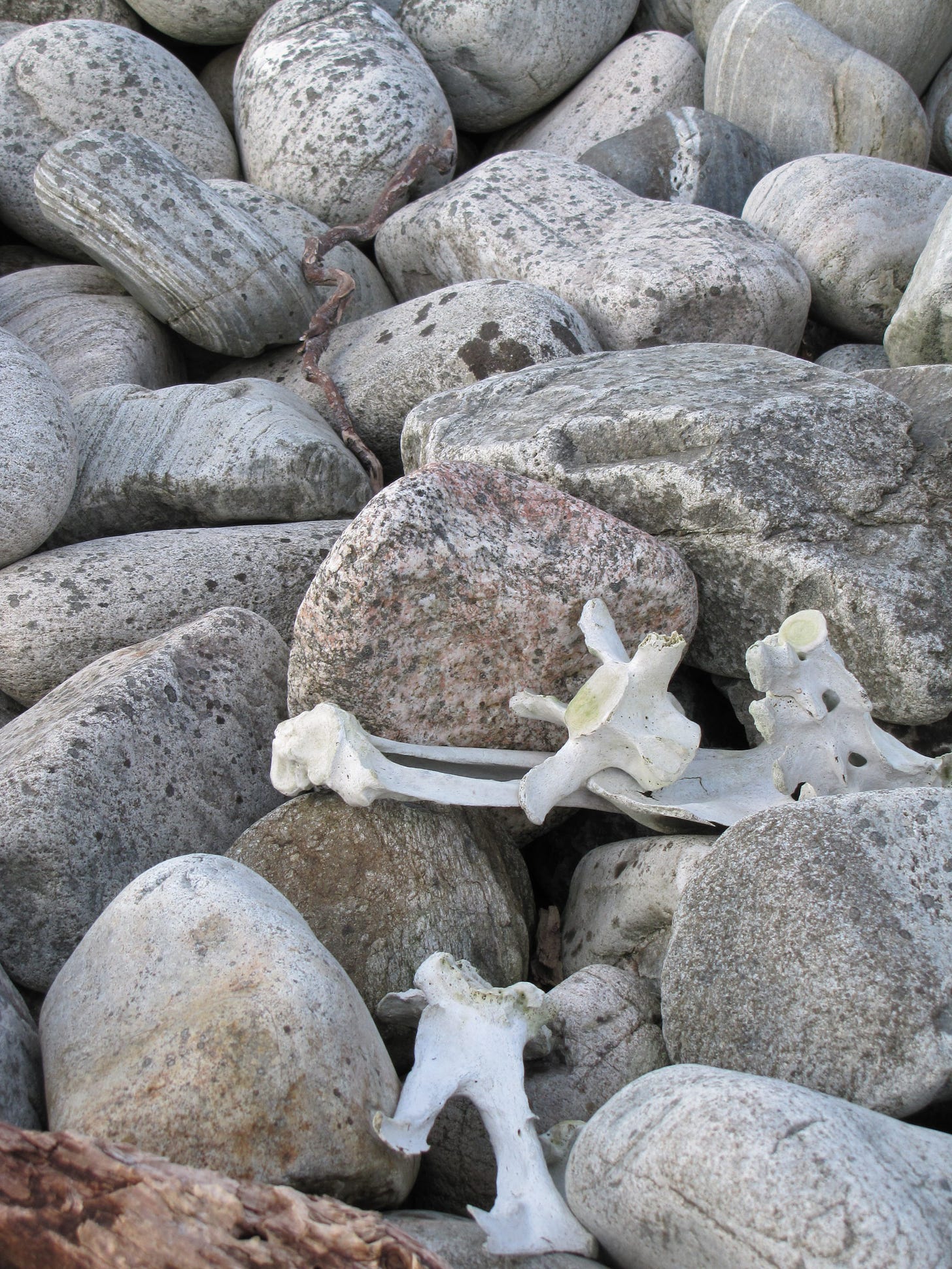A Walk, as an Ancient Child
AWE Season One Episode Five: Using our senses and creativity
This is the fifth post of this first season of The Crow’s Nest, and the second of the ‘workbook series’. Each of these posts discusses a facet of respect in relation to understanding the natural world, especially through ancestral skills and the eyes of our distant ancestors.
The previous post, Using All The Senses, talked about how we can regain and reinvigorate our personal senses when out in nature, discovering and using data we might otherwise have ignored or missed, and discussing how we need to respect our intuition in order to fully open ourselves to being a part of the natural whole.
Here, I am going to share one way we—you— can use these skills: to test ourselves, our senses, our intuition—and our imagination.
As ever, photography is all my own work.
Unlike the others in the series, the whole of this post is also free to all. If you enjoy it, do consider subscribing, or upgrading your subscription, along with leaving a comment or sharing this letter. These things really do mean a lot to me, thank you.

A Walk in the Woods (or anywhere else)
For the purpose of this exercise, I want you to use your imagination. When we are children, we can slip in and out of worlds, constantly altering reality to fit our games. Perhaps the bed is a boat, the wardrobe a vast, tall mountain, its top wreathed constantly in cloud? The floor is, at various times—I’m sure we’ll all agree—the deep ocean or bubbling, treacherous magma. To fall into either is certain death.
I want you to think about this, the next time you are in the woods, or walking along a beach, in a park, along a path through the fields, or over a hill and down into the valley beyond. If you can only walk in a city, that is still perfectly valid for this exercise. Even if you can’t leave your room and only have a window to look out of—what do you see, what trees are there? Are there birds, or flowers in the street? How about mosses or insects? I’ve never been anywhere I could not find some nature (for the purposes of this exercise, you can even co-opt manmade items and detritus into your thoughts…).
Now, I want you to try and recapture that childlike view of the world, but with a singular, specific purpose.

As you walk, or as you pause and perhaps close your eyes and use your other senses, as we talked of recently, I want you to imagine you are your own distant hunter-fisher-gatherer ancestor walking the same route. How do you think he or she or they would react to what they can see? What would be alien to them, what would be familiar?
How do you think they would approach a walk in, for example, a woodland? What about that beach? What do you think they would look for, and why? Begin to inspect every detail around you, look at every plant, even if you do not know the names or uses of them. Simply observe and notice the different species. If you already know some of the things you see, and have ideas of how they could be used by that ancestor, even better—but there is no need for this, what you are trying to achieve is a switch in the way your modern, conditioned brain works. You need to see all and you need to think creatively and laterally.
Perhaps your ancestor is searching for a specific resource? Maybe they need a new hammerstone to make flint tools, so they look to the ground, examining where trees have fallen and ripped up the earth, or checking for just the right cobble above the strand line of the coast. Maybe they are seeking bark to make a container, so search mostly at eye-level, or perhaps they are looking for birds, to eat, to use their bones for instruments or tools, and their down and feathers for insulation or fletching for arrows.
One thing is sure—our ancestors would never, ever, walk by an opportunity, even if they were not searching for that specifically. If they found a patch of berries which were perfectly ripe, they would gather them, perhaps first weaving a quick basket from a nearby willow, or from blackberry vines. If the berries required another few days of sun, the location would be stored away and shared with family, to return and gather when ready. If they found a fallen ash tree (Fraxinus sp.) with cramp ball fungus (Daldinia concentrica), also known as coal fungus or, in the UK, as King Alfred’s cakes, they would gather them, knowing what a remarkable tinder it can be once dry, taking a spark, slow burning, and behaving in a similar way to charcoal. If they saw dry material for extending and growing a fire, they would gather it, knowing it might rain later.
In short, they would constantly be browsing, examining everything they saw (and heard, and smelled, remember? If you hear a sound, pause and listen, perhaps cupping your hands behind your ears and turning your head to locate it—this works remarkably well, and is a skill often forgotten these days) and either gathering it, or filing it away for future consideration.
Their entire world was essentially a supermarket or a mall to them, packed with everything they could possibly need, and opportunity was everywhere.

This is what you need to start to do yourself—you need to begin to recognise this opportunity when and where it arises, making a mental note, or one on your phone or in your notebook or journal, of where a particular plant or resource grows or can be found. If you won’t use something immediately and it will spoil, leave it for others—our wilder brothers and sisters, or another human. Conversely, if you find where a tree has fallen over and notice a large nodule of flint poking out from amongst its roots, perfect for turning into tools, pick it up and take it with you, even if you won’t use it for some time. Frost damages flint, so the sooner you can take it away and store it safely, the more likely you can fashion better tools from it.
Respect your imagination—it can offer alternative solutions to those your rational, logical, ‘grown-up’ mind could. By being creative we can solve problems, by observing the world through the eyes of our inner child, we can release tension and step back from those modern issues which can all too easily threaten to overwhelm. If we approach nature as a place of safety and wonder, full of potential food, medicine, tools, shelter, and magic, we begin to feel very differently about the world.
Do not forget to observe your intuition—those feelings which you can’t quite pin down. Is it telling you a place might be good to build a temporary shelter? Why do you feel good about one spot, and not another? Why does walking beneath one species of tree feel better than the one you just passed? Consider these things and store away the information to further examine, later.
Thinking laterally as you walk, thinking in terms of the dimension of time (I can’t eat those berries now, but I could in six days; I can’t use that flint now, but I shall this winter), then you can begin to feel a depth of connection to the land which is often lacking in our often sanitised, cleared footpaths. As soon as you put down a temporal marker—knowing that this elder (Sambucus sp.) stem will be perfect to be harvested in winter, turned into a hand drill spindle, a container, or even a blowpipe—you begin to feel attached to wherever you are. Even if you won’t be there when it is ready—it does not matter, that attachment still forms in your mind. I have paths mapped in my mind across the years of my life and the distance of my travels.
This mapping of paths can be made easier with imagination. This tree looks like an old woman, stooping towards you and offering a welcoming hug, that rock clearly has an eye and a slight grin, pleased you have noticed it. Those tracks crossing yours are from the night workers, badgers returning home to their setts. When they wake, they will scent your own trail and wonder. Invest a place and a walk with story and meaning, adding layers which make it easier to recall, but also more fun—we remember and we feel ourselves attached to the ultimate whole of the natural world. Everything can have a meaning, if only we let it.
This is how we begin to respect our surrounding nature, on a much deeper level. As soon as we attach need, want, and time to the items we see—especially when we make-believe, thinking through the minds of our ancestors—we take giant leaps to being more connected with the world, on a primal, remarkable level.
Do try this, it might make you feel rather different about your usual walk. Even if you don’t know what you are seeing, it is a place to start—perhaps you already know there is a fungi which appears on your route, every September or October, but you don’t yet know what it is, whether it has a practical use. In this case—or if you eagerly await the ripening of the local raspberries or cloudberries—you are already mostly there, deep, cyclical, time, the rhythms of nature and the world, are a part of your life, and this is a wonderful thing.

Practical Considerations
It is always wise to research the laws and rules of wherever you live. A part of me wants to tell you to sit on the grass and sow your Hattifattener seeds on Midsummer Eve, as per Tove Jansson’s Snufkin (Moominsummer Madness 1954), to rebel against unwise rules but, unfortunately, this is the world we live in. The last thing I want is to get you—or me—into trouble! So check whether you can access an area, or whether foraging or collecting natural items is banned. If they are, ask yourself and the authorities why. I shall return to this topic in the next post.
If you begin to approach every walk as a hunter-fisher-gatherer ancestor, you will need a few tools. This is a step further, for it means you have already identified items for your use, but I think this is a good place to begin talking about this.
One thing I always take with me is a few small plastic zip-lock bags. I am not a great fan of plastic, it has to be said, but these bags can make collecting things so much simpler (which reminds me—I must replace one of my bags, as it now houses the leg bones of a young deer, or perhaps chamois, along with the hoof and some fur I collected a few weeks ago). It can also be worth carrying a paper bag or two, for when potential humidity is an issue—this is especially useful for fungi, although a woven basket works even better.
A larger cloth bag is also a very useful asset. This can simply be a tote bag you perhaps received from a shop, or one you sew yourself. The key thing is to firstly remember to carry it with you at all times and, secondly, to ensure you can roll it down into a tiny space or make it incredibly comfortable to carry—meaning it is less likely you won’t take it.
This is a good example of a bag which can be used for gathering purposes. This is a traditional Lahu design, one of the groups of people colloquially known as the hilltribes of Northern Thailand. Traditionally subsistence farmers, using slash and burn farming, they also extensively supplement their diet with wild foods. This woman, guiding us to see their coffee plantation, noticed some plants growing near the trail on the walk out and, on the way back, picked them, placing them in her bag and later serving them as part of dinner. Always think ahead and always consider opportunity.
The other item I would advise you carry at all times is a small pocket knife. Our media and governments have sensationalised the carrying of knives, making those who carry them appear to be intent on constant violence, one step below going out with guns or perhaps swords. For hundreds of thousands of years we carried cutting tools. We should, still, yet it can be difficult to follow complex and at times strange laws.
Always ensure you are breaking no laws—in the UK, for example, it is illegal to carry anything which is either fixed bladed or locking, unless you can prove you have reason. There is no fall back option before the law of ‘just in case I needed it’. However, you are allowed to carry a small, folding blade, as long as it doesn’t lock and isn’t too long (I’m not writing specifics here, as I don’t want anyone relying on what I write—laws change, and I encourage you to seek out the details of where you live). Here, in France, it is technically illegal to carry any blade at all, yet studies suggest well over a third of the entire population carry an Opinel, Swiss army knife, or Laguiole folding blade on a day-to-day basis.
Much of the law depends on law enforcement, and therefore on who you are and your circumstances. If you are on a stroll in the woods, you are far less likely to be stopped and searched than if you are in a city. The sad truth of the matter is that this also depends on your age and appearance. A middle-aged white woman, carrying a basket and mushroom knife to the forest is not likely to be arrested. A black, male teenager? That is another matter.
Personally, for my day-to-day (Every Day Carry—EDC) use, I have a non-locking Victorinox Camper model, one in my pocket and one in my backpack. This has the added and very useful advantage of a small, effective saw, two blades, and other tools. I also have an Opinel no. 7 in my pack, when in France.
Of course, the other option is to make and carry a small flint or obsidian blade, even if that is technically often also illegal. I have a flint tool from the early Bronze Age of the UK, therefore around four thousand years old, referred to as a thumbnail scraper. It is a tiny blade, but still sharp to this day, and I used to carry—and use—that. A prehistoric EDC. I doubt a policeman would even consider it a weapon and I can’t imagine how it could be used as one, either. As a tiny blade for gathering plants, it worked surprisingly well.
These items—plastic ziplock bags, paper bags, a cloth bag, and a small knife—should go with you on all walks, whether popped in a pocket or in a shoulder bag or similar. I keep mine in both my waterbottle pouch and in my day-to-day backpack, sometimes transferring some to a pocket if I am taking nothing on a very short walk.
If you are out collecting with purpose, then there are other things you can—and should—take, but that is a topic for another chapter of this project.

However, perhaps the most useful thing to the modern hunter-fisher-gatherer-naturalist, one which the vast, vast majority of us take everywhere, is the mobile- or cell-phone. I have seen people advocate to always leave your phone behind on walks in nature, which seems counterproductive, as it can record so much information, whether through photography, video, sound recording, or by taking notes.
You can always supplement or replace this with a proper camera and a notebook (again, I will talk more about this in the future, including how useful the notebook can be, especially with scale markers included, for example), but I find nearly everyone carries their phone, so why not use it to aid in your journey of nature discovery? Take photos of anything and everything that captures your interest—document your daily walks, or those which require more effort. I will be talking about an interesting way to use this material soon.
If you have found this interesting, or useful, do say hello! I’d love to hear if you try this idea on your next walk. If you use Substack Notes*, a restack, like, or comment is extremely welcome.
Next time, I shall be talking about respecting nature, the idea of ‘leave no trace’ and bans on collecting, for example, wildflowers. This might be a somewhat more rebellious post than you might anticipate, as I believe it is a better path to steward nature, to understand when it is wiser to actually collect than leave things untouched. It is a matter of perspective and care—and understanding why we are not allowed to walk in one place, or why we are discouraged from gathering a bouquet of wildflowers. I believe a quiet, careful, and considered revolution may be needed here.
Deep respect of nature is not about ‘do nots’ but about love. I hope you shall join me for this discussion.
*If you don’t use Notes, I urge you to have a look, at least. It is such a different place to the social media we have become used to. There are no adverts, at all, people have real conversations and discussions, fostering respect and care over what they say—in short, it is somewhere calmer, more thoughtful.
Here’s an excellent primer on Notes, well worth reading:




Alexander, you have opened our eyes to seeing nature everywhere and returning to our primordial senses. I loved this read. Thank you!